Earlier this year, we wrote an article detailing NuLiv Science's incredibly unique senolytic ingredient, Senactiv. In that article, subtitled Regenerate Senescent Cells and Perform Better,[1] we discussed the ingredient's potent combination of Panax notoginseng and Rosa roxburghii, and highlighted its ability to work as a senolytic, making way for new cell growth by clearing out old, dying, "senescent" cells.
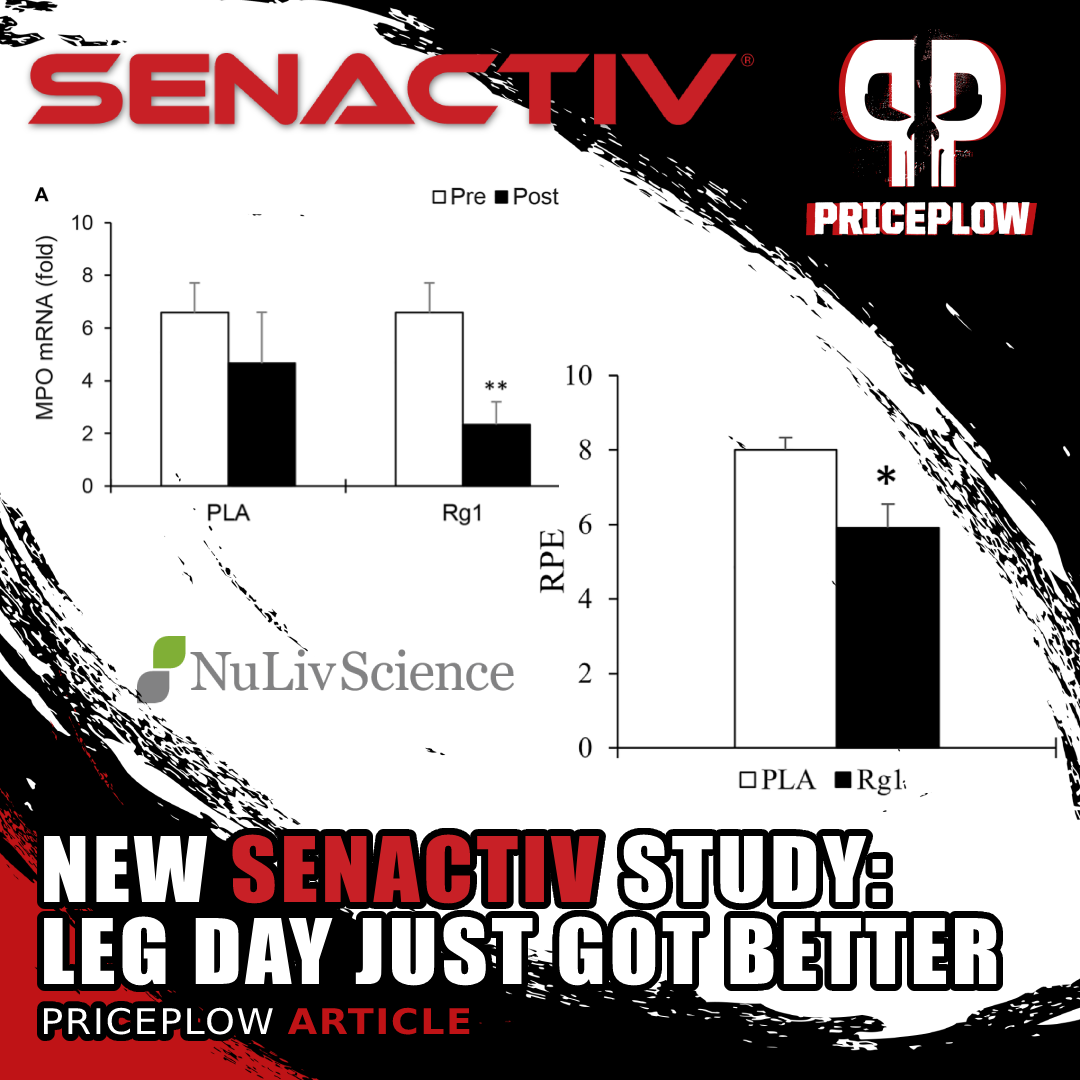
Your Leg Day just got better! A new study using the ginseng portion of Senactiv showed lower perceived exertion in heavy squats and reduced inflammatory markers a day later!
Scientists recently published a new study on the ginseng portion of Senactiv, giving the scientific community more information not only about the ingredient, but about human muscle tissue as well. The study, published in Aging, is titled "Reduced stem cell aging in exercised human skeletal muscle is enhanced by ginsenoside Rg1",[2] and used actual muscle biopsies to confirm some findings that had never been measured in live, resistance-trained humans!
Summary: Senactiv reduces perceived exertion and decreases inflammation a day later
The brief summary is that the ginseng component of Senactiv is able to reduce perceived exertion of squats when taken an hour before training. Moreover, a day later, the athletes who received the treatment had significantly reduced inflammation compared to placebo, as indicated by numerous biomarkers.

NuLivScience is a global research company with several patented ingredients including AstraGin, InnoSlim, Astrion, and Senactiv.
In addition, thanks to the muscle biopsies that were seen in the placebo group, the scientists were able to push science a bit further, learning what actually happens at a genetic-immune response level when a muscle is pushed hard.
This is the kind of win-win research we like seeing: an ingredient that makes training feel easier, and a study that teaches scientists which measurements actually have meaning. It's covered below, but first, sign up for PricePlow's NuLiv Science news alerts so that you don't miss the next publication:
Subscribe to PricePlow's Newsletter and Alerts on These Topics
Background: Understanding the biomarkers to measure
Before getting into the study, we need to define the biomarkers measured. "Perceived Exertion" is the easiest result to understand, but it's also subjective and subject to the placebo effect. However, these biomarkers are a bit more indicative of what's going on under the hood.
-
p16ink4a
Out with the old, in with the new. Regenerate senescent cells and improve performance with NuLiv Science's Senactiv
p16ink4a is a protein found in cells that can replicate, and it inhibits cell regeneration and self-renewal. Researchers now know that p16ink4a cell counts are about the same in young and old muscles,[3-5] making their quantity a less-worthy indicator of aging.
-
p16ink4a mRNA expression
However, as cells age, p16ink4a mRNA expression increases -- which effectively "marks" them for clearance and removal.[6]
Its expression is thus a better biomarker for tissue aging, as it consistently goes up in stressed and aging tissues, and it increases exponentially as we age from 18 to 80 years old.[7]
Ultimately, we want fresh cells that are able to grow, and we want to ensure they're fresh by not having too many old ones that are "tapped out" sitting around. This means we want p16ink4a mRNA expression lower in order for the cells to feel refreshed and youthful. Scientists know that exercise itself will reduce p16ink4a mRNA expression a day later (remember, exercise is healthy and anti-aging!), but this study set out ot see if we could reduce it more with supplementation.
-
EPC
From PREVIOUS research covered in our original Senactiv article:[1] Improved VO2 Max from Senactiv means big things for everyone, not just endurance athletes! Image courtesy NuLiv Science.
CD34+ EPC (endothelial progenitor cells) contribute to cell regeneration in muscle tissue.[8] After weight training, EPC is released from the bone marrow and goes up for six hours, eventually returning to baseline after 24 hours.[9]
EPC is a good marker for how hard a muscle is trained, as EPC rises the higher the intensity.[9]
-
MPO
MPO stands for myeloperoxidase, which is an enzyme that carries out important immunity and inflammation defenses.[10] MPO mRNA levels are great neutrophil markers -- they help us determine inflammation and inflammatory response.
Our goal is to get MPO mRNA levels back down after training.
-
Rg1
Immunostimulant Rg1 (labeled as just "Rg1") is the ginsenoside used in the treatment.
5 milligrams Rg1 was used, and this is the amount you would find in 50 milligrams of Senactiv.
Expect to see a lot more Senactiv in the coming years. You'll understand when you try it at a higher dose! This study used an equivalent of what you'd get in 50 milligrams of the ingredient.
What's interesting is that some of the biomarkers above have never been measured in vivo using live human cells! We have in vitro data, but before this study, we didn't know what would happen to actual muscle tissue in terms of EPC and p16ink4a mRNA - with or without any added ginseng.
With these terms defined, we can now get into the study:
The Senactiv Ginseng Squat Study
The researchers recruited 12 healthy college-aged men with at least two years of weight training. They then followed the following double-blind, placebo-controlled, crossover design:[2]
The design
-
Participants stopped training for a week.
-
After a week, muscle biopsies (3 centimeters deep!) were taken to establish a baseline.
-
At least ten days later, the first squat exercise challenge would begin. Participants were once again told not to train for a week before the challenge.
-
Challenge Day:
Ghost Legend pre workout is probably the most popular supplement with Senactiv inside. (Legend was not used in this study)
-
Enter with a 12 hour fast
-
1 Hour Before Training: Take treatment (5mg Rg1 or Placebo) in an Herbalife Formula One shake, which contains carbs and proteins and successfully blinded the Rg1 flavor.
-
Stretch, Warm-up, and determine 1RM max using Jay Hoffman's NSCA Design,[11] which involves 10 reps at 50% of estimated 1-RM, 5 reps of 75% estimated 1-RM, and a final set of 1 rep at 90-95% estimated 1-RM.
-
Rest 5 minutes
-
Perform 1RM squat protocol with a qualified trainer -- knees at 90 degrees!
This protocol involves 3 to 5 attempts with progressively heavier weights at 3-5 minute rest intervals until a 1RM max is achieved.
-
Upon completion, record subject's perceived exertion (RPE) using verified methods.[12,13]
-
-
Muscle Biopsy 24 hours later
24 Hours post-exercise (25 hours post-supplementation): Take muscle biopsy (3cm deep!).
-
3 week washout and repeat with the opposite treatment!
The Results: Easier Training and Less Inflammation a Day Later
After collecting all data and performing the statistical analysis, the researchers came away with two major conclusions:
-
The athletes had significantly reduced perceived exertion an hour after taking the Rg1 from Senactiv on their "leg day" efforts.[2]
The researchers can currently only hypothesize on the exact mechanism, theorizing that there is some action of Rg1 that facilitates muscle recruitment in the brain itself.
Knowing that ginseng is adaptogenic, as discussed in our article on Astragalosides and Ginsenosides, this isn't terribly surprising - but we don't know the exact "mind-muscle" pathways that are triggered.
A day later, the Senactiv group had dramatically reduced MPO mRNA, indicating less neutrophil inflammation![2]
The athletes had significantly less muscle inflammation a day later with Rg1 from Senactiv, as indicated by far lower levels of p16ink4a mRNA expression (lowered to 35% more than placebo from baseline) and MPO mRNA (39% more than placebo from baseline).[2]
This is despite the fact that EPC rose in both groups (not statistically different) -- by about double -- indicating that they did exert quite the effort on both training days.
Ultimately, this means that Sencativ's Rg1 not only made training easier, but improved recovery -- it led to better (and likely faster) cell regeneration. When p16ink4a mRNA expression stays high (ie. old cells cannot regenerate), we become relatively cemented with aged, less-than-useful cells.
A contribution to science
Further, the placebo tissue samples provided quality information regarding normal post-exercise p16ink4a activity, confirming what the researchers suspected - that its mRNA expression (which changes with age) is more important than its total count (which doesn't change with age).
This provides new measurement capabilities for future scientific studies, paving one more step of the way in the fight against both aging and muscle damage. These effects are on top of the VO2 max and glycogen replenishment improvements indicated in our original Senactiv article.
Follow along on YouTube
Senolytics are the future
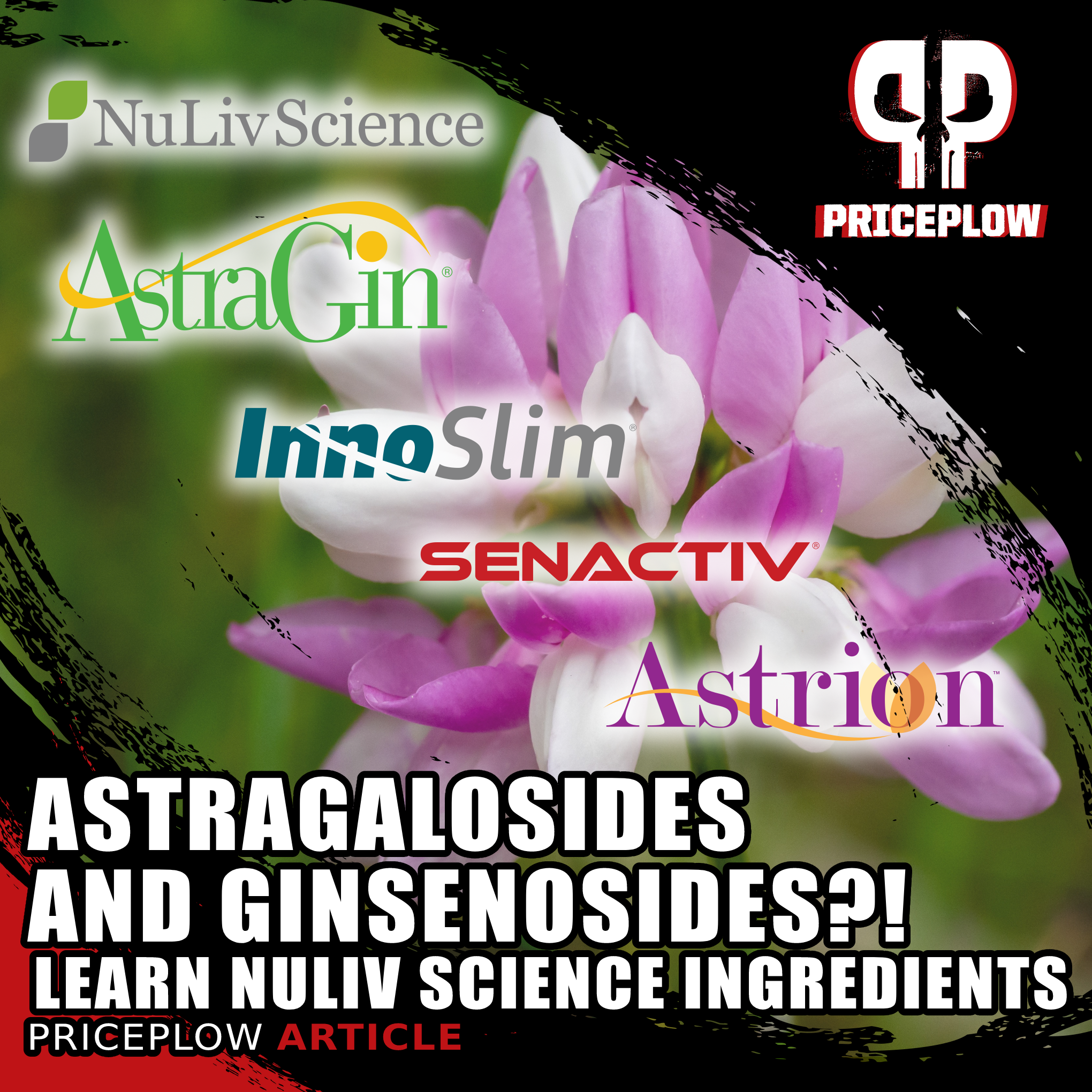
What are the differences in these NuLiv Science ingredients that use similar plants? We dive into the Astragalosides and Ginsenosides inside, and break down the different constituents of four of NuLiv Science's major sports nutrition ingredients
As a senolytic supplement, Senactiv has the ability to promote faster growth and regeneration. This has implications in the athletic industry (getting users to train harder on a more consistent basis) and in the anti-aging industry (clearing out elderly cells and making way for youthful ones).
Remember, in this study, they used an equivalent of 50 milligrams Senactiv, so any brands hoping to cite this research should include that in their supplements.
In our previous Senactiv-based articles (linked below), we've repeatedly stated that taking higher-dose Senactiv (up to 200 milligrams per day) anecdotally seems to make training easier - especially in terms of endurance. We now have further evidence that it's a real effect - both by VO2max improvements and by reduced perceived exertion -- and the 24-hour recovery aspect is impressive as well.
As we age, our cells stop regenerating, and we become overloaded with dead, useless cells. Taking Senactiv and its Rg1 component is an incredible way to keep cells fresh - and it feels fresh too.
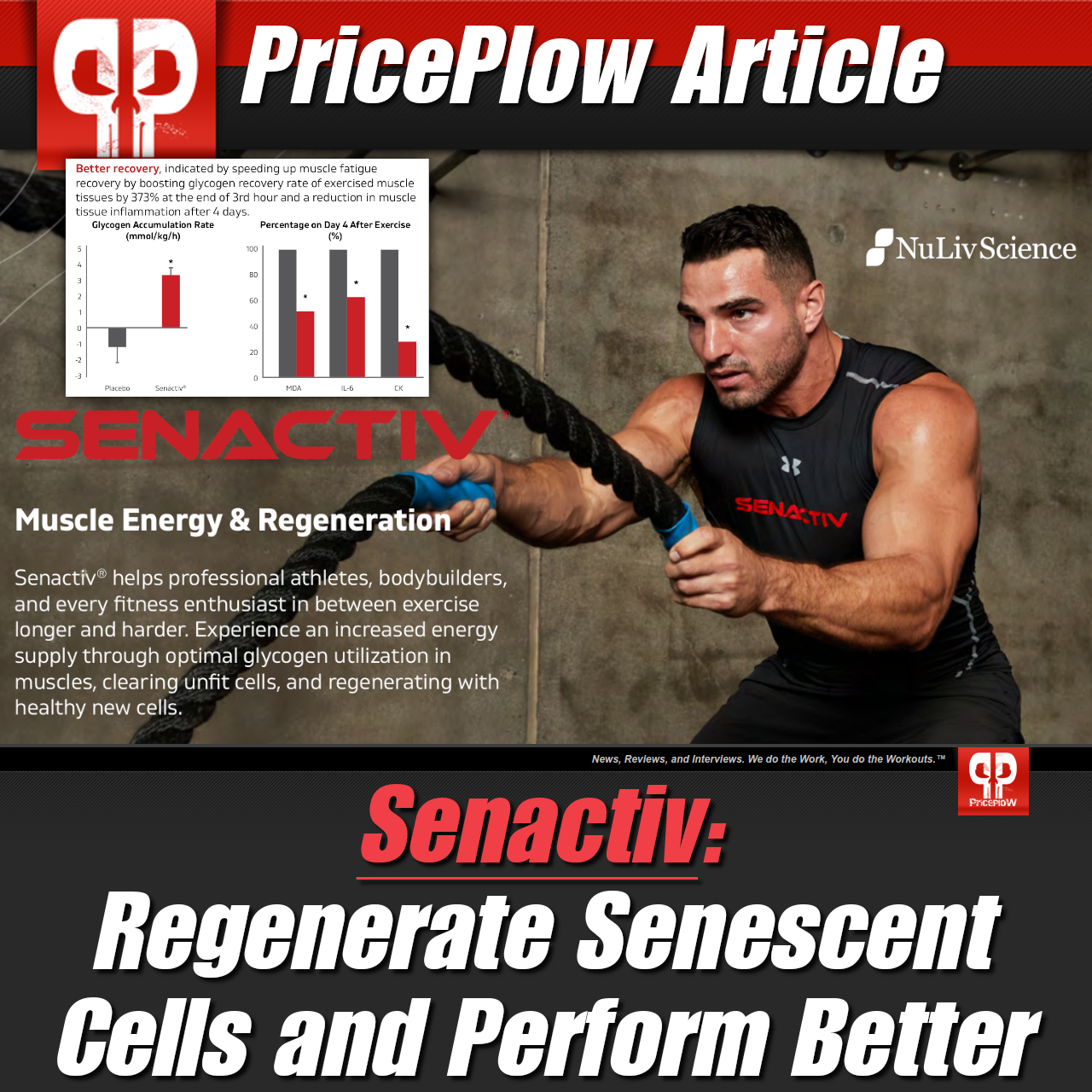
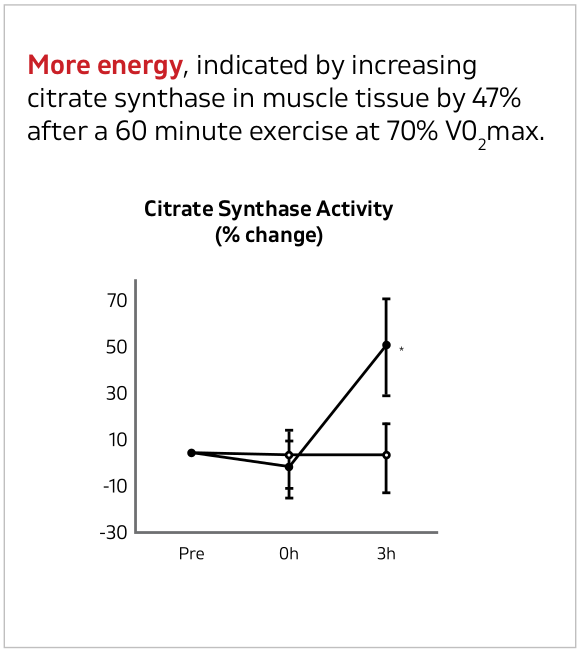
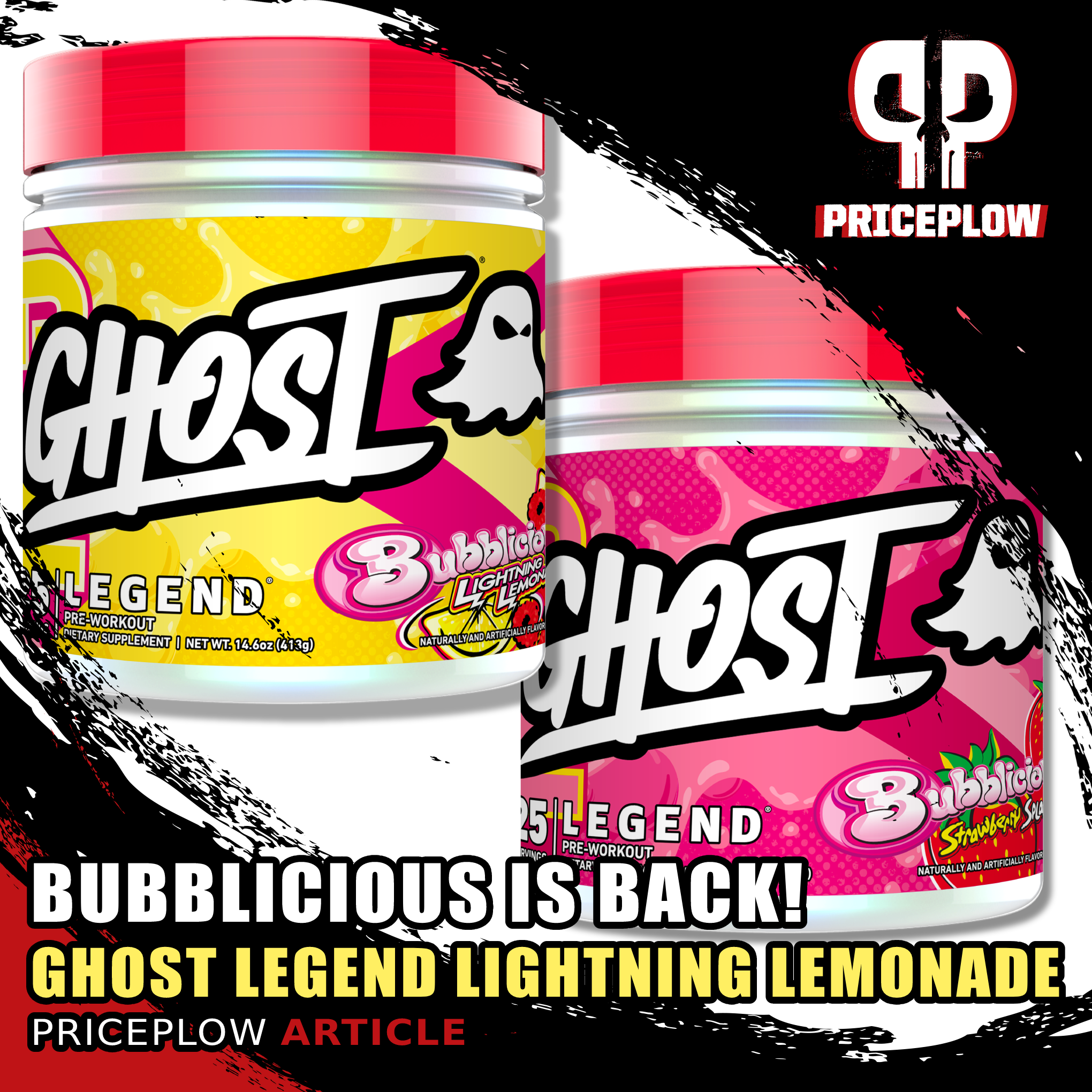

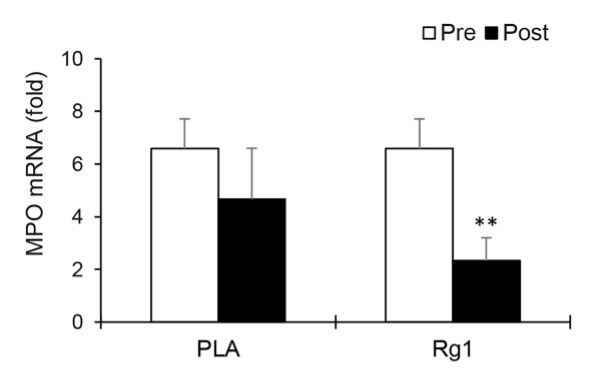


Comments and Discussion (Powered by the PricePlow Forum)